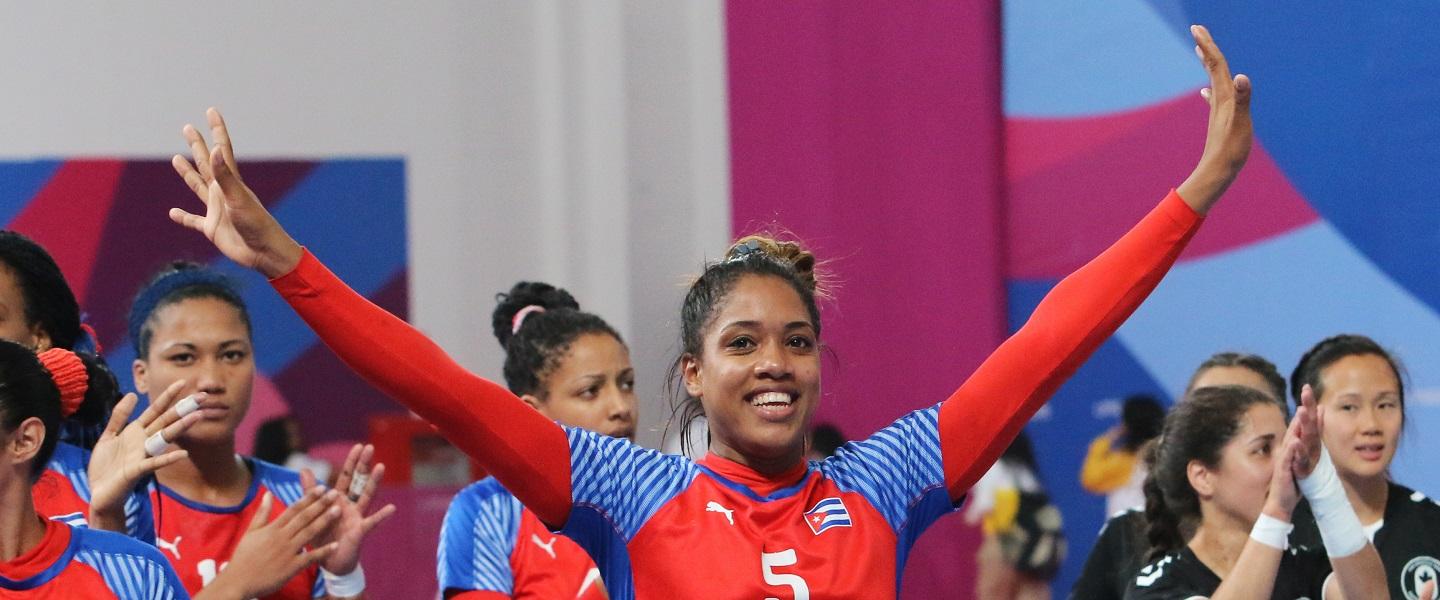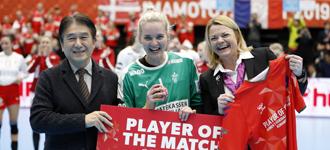From 2013 to 2019: 24 journeys to the 24th IHF Women’s World Championship
15 Nov. 2019

With just two weeks remaining until the 24th IHF Women’s World Championship begins in Kumamoto, it is not long until the 24 teams vying for the title will make their way to Japan. As the World Championship draws closer and excitement builds, we take a look back at the path to Japan 2019, and how each team made their way to the pinnacle event.
The journey began long ago for the first team confirmed on the list of participants, when Japan were awarded organising rights for the event at the 2013 IHF Congress in Doha, Qatar. Just over one month prior to that announcement, Japan, specifically the capital Tokyo, had been awarded hosting rights for the 2020 Olympic Games. Thus, a period of intense development work for handball in Japan, and especially women’s handball in light of the two events, began.
It was not until four years later that the second team was added to the list of Japan 2019 contenders, when France claimed their second world title at the 2017 IHF Women’s World Championship in Germany. With that, France were assured of a place at Japan 2019, as defending champions.
One year after France’s success, December of 2018 saw a flurry of activity across the globe, as no less than 12 nations secured their places at Japan 2019 through continental championships. Brazil and Argentina were the first, as they finished as the first- and second-ranked sides, respectively, at the 2018 South and Central American Women’s Handball Championship on 4 December.
On 9 December, at yet another major international handball event hosted by Japan – the 2018 Asian Women’s Handball Championship – South Korea, China, Kazakhstan and Australia secured berths at the World Championship. South Korea did so thanks to what was their 14th title in the event. Out of 17 editions, South Korea have missed the trophy only three times.
South Korea defeated Japan in the final, but as Japan were already qualified, the fourth-placed side could also celebrate, due to there being three places allocated for Asia. Therefore, although China clinched the bronze medal, Kazakhstan also had a reason to leave the event satisfied.
Under the new qualification pathway for Oceania, which was in action for the first time on the road to Japan 2019, the top team from the continent could qualify for the World Championship if they ranked among the top five nations at the Asian Championship. Both Australia and New Zealand participated in the event, and Australia managed fifth place and with that a World Championship ticket.
A few days later, on 12 December, the 23rd edition of the African Women’s Handball Championship concluded in Brazzaville, Congo. Like South Korea, Angola continued their long-held dominance in their continent, raising their 13th trophy. Runners-up Senegal and third-placed Democratic Republic of Congo also qualified for Japan 2019 with their results. For Senegal, the 24th IHF Women’s World Championship will mark their debut at the event.
Next, the spotlight moved to Europe, where France added the EHF EURO title to their current list, which also includes the Olympic silver medal claimed at Rio 2016. Both the Olympic silver and the European title were firsts for France. As France already had a place at the World Championship as the defending champions, the fourth-ranked team at the EURO also qualified for Japan 2019, alongside the second- and third-placed squads: Romania, Russia and the Netherlands, respectively.
However, the chance for European sides did not end there, as the continent have an additional nine places. The European qualification took place over an extended period in two stages. For the first phase, in November 2018, the 16 teams who did not contest the EHF EURO 2018 played four round-robin tournaments, with the winners of each proceeding to the second stage.
For phase two, played in early June 2019, the four winners of phase one plus the EHF EURO participants who had not already qualified for Japan 2019 were drawn into nine pairs for home-and-away play-offs, which would see the aggregate winners securing World Championship berths. There, it was Germany, Denmark, Sweden, Norway, Serbia, Montenegro, Slovenia, Hungary and Spain who joined the Japan 2019 line-up.
Only a few days before the last European qualification matches were played, the 2019 North America and the Caribbean Women’s Handball Championship took place in Mexico City. It was Cuba who finished on top of the ranking on 2 June, thereby becoming one of the final participants confirmed for the 24th IHF Women’s World Championship.
With all the qualification matches and tournaments played, the list of 24 contenders for Japan 2019 was finally known, and the draw was subsequently held in Kumamoto on 21 June. Now, the event that has been long-awaited in Kumamoto is merely two weeks away from throw-off, and the list of 24 will soon be sorted into a ranking that will see the 2019 world champions crowned.
PHOTO: Cuban Handball Federation






